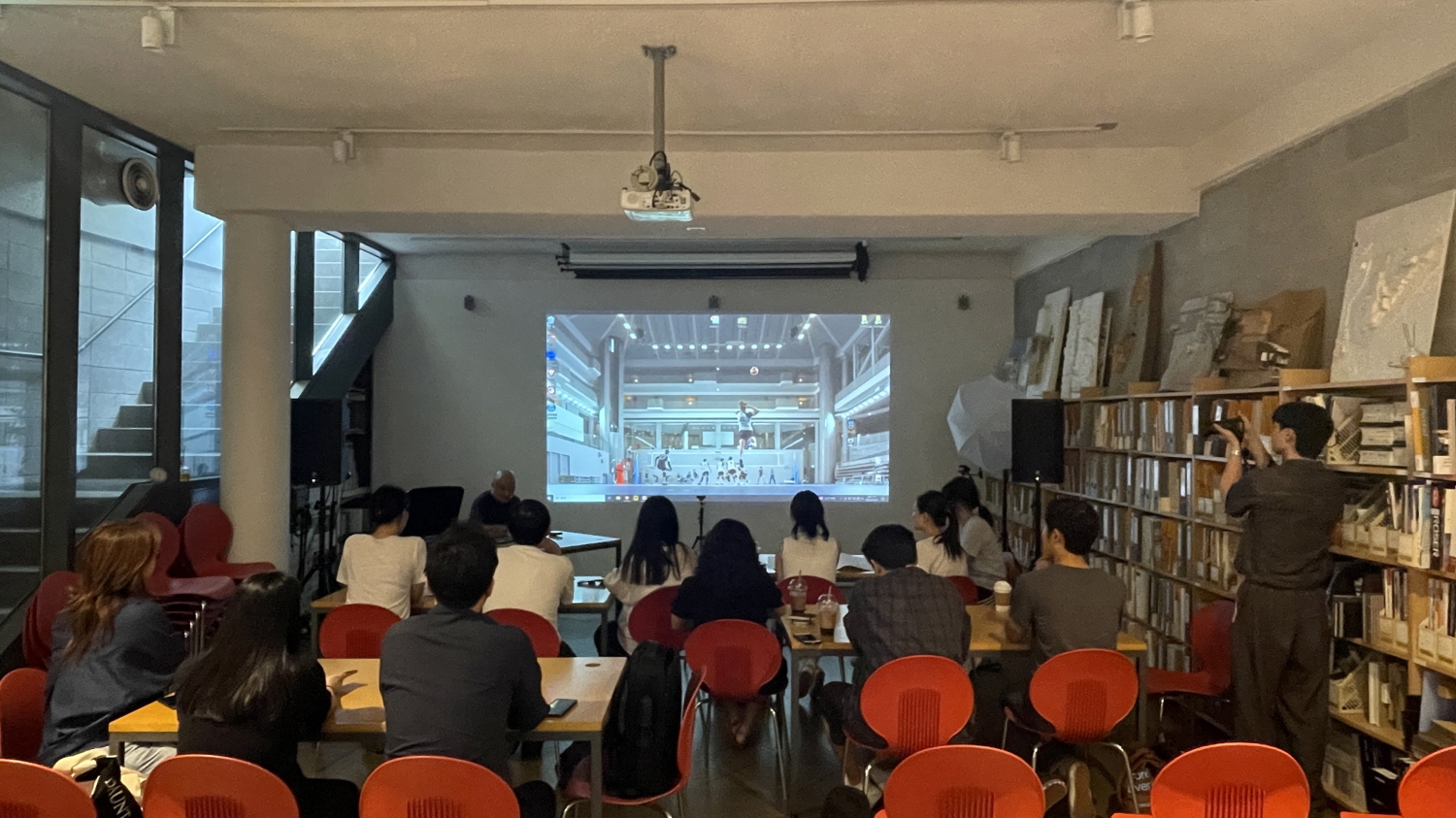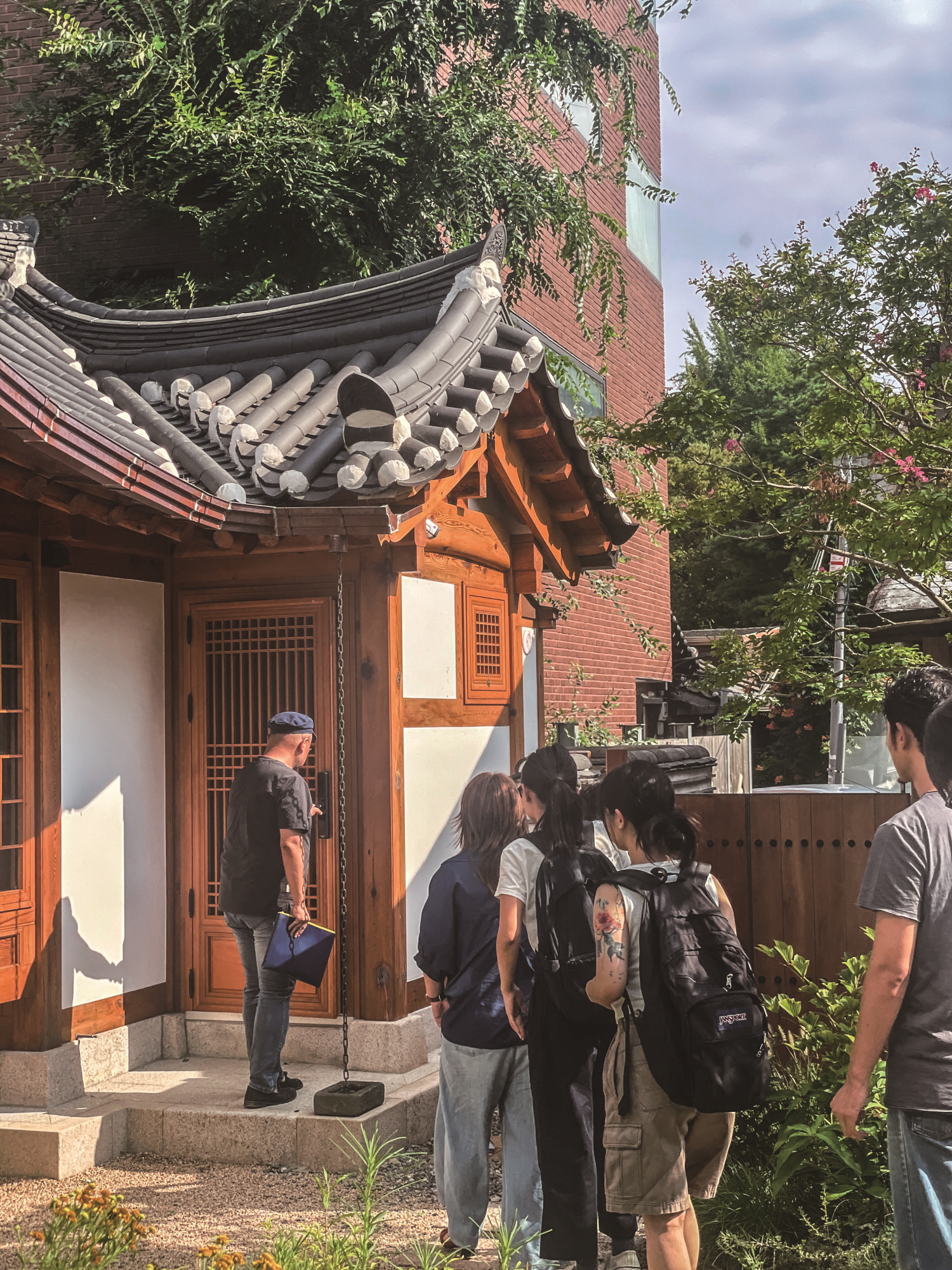SPACE October 2024 (No. 683)

Lecture view of ‘Early narrative of Korean modern architecture’ ©Park Jiyoun

View of field trip to T3 ©Yoon Jeongsu
On Aug. 23, the 19th SPACE Student Reporter Summer Workshop gathered for the second face-to-face event of the year in Jongno-gu, Seoul. This time, it was accompanied by Hwang Doojin (principal, Doojin Hwang Architects). A lunch, a lecture at his office, Magnolia Court (2011), and a field trip to his two projects were on the agenda. For the lecture, Hwang Doojin chose a topic that has recently interested him, ‘Early narrative of Korean modern architecture (from the perspectives of current architects)’. Prior to the lecture, he made clear that his point of view might differ from that of the historian. He then continued his narrative from the Japanese colonial era by highlighting significant personnel and keywords.
To begin with, he examined the case of Japan in order to define the modern era. In Japan, the modern era is a period of time when various socio-cultural values, including architecture, flourished and were reorganised. On the other hand, in the our country, Korea, the situation was quite different. Due to the colonial rule of Japan, Korean architecture was never able to establish itself independently. Naturally, the field of study didn’t have the opportunity to converse with other disciplines. Hwang Doojin stated that this fact can be seen from the limited number of educational institutions. By that time, Gyeongseong Institute of Engineering was the only school that provided architectural education. Moreover, the only university in this peninsular, Gyeongseong Imperial University, didn’t even offer the programme. Hwang Doojin developed the argument that this background led to an apathetic attitude underlying Korean society and caused several regressive phenomena. These included the absence of architects, a lack of subjectivity, frequent career distortions, corruption, collusion, and the naïve belief that some messianic entity would emerge to solve all these problems. Finally, he drew his conclusion by stressing the roles and responsibilities of an architect. He believes that these roles and responsibilities should cover the redemption of the lost ‘name’ of the architect, the restoration of the architect’s identity, and the archiving activity.
Afterwards, the lecturer and the SPACE student reporters moved to T3 (2024), a classic example of his manifesto, ‘Rainbow Cake Architecture’. The main idea of Rainbow Cake Architecture can be explained as a type of architecture that has a mixed-use program (usually, residential for the upper floors and a different programme for the lower floors). During the tour, Hwang Doojin confessed that the façade was inspired by the nearby Gyeongbokgung Palace stone walls and Inwangsan Mountain. Furthermore, he told his audience that in the situation where hanok, a Korean traditional house, had to be placed in two of three plots, he chose to design one of the plots with a courtyard to harmonise with the neighbourhoods. Next, the group of students turned their steps toward North Terrace (2017) in Waryong-dong. This award-winning project is another good example in which to study his architectural language, such as Rainbow Cake Architecture and ‘Porosity’. The idea of Porosity can be understood as promoting the usage of spaces where the interior and exterior intersect, such as rooftop gardens and terraces. The field trip was mainly conducted in offices and living spaces on the third and fourth floors. The incredible view of Changdeokgung Palace from the terrace was particularly memorable. In summary, this event was a great opportunity for student reporters to reflect on modern Korean architecture and to experience Hwang Doojin’s architectural world.





